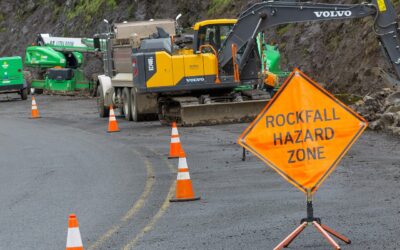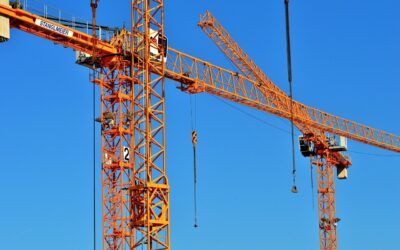In today’s construction industry, the steady transition away from traditional Design-Bid-Build delivery toward more collaborative, integrated, and risk-balanced models is no longer a prediction — it is a measurable fact.
Data from the Design-Build Institute of America shows that the design-build construction model will account for about $2.6 trillion in U.S. construction spending between 2024 and 2028. That represents approximately half of all construction activity. However, the American Council of Engineering Companies reports that more than 75 percent of firms are now engaged in Progressive Design-Build (PDB) delivery.
The shifts in construction delivery models are driven by the need to compress schedules, improve cost certainty, mitigate supply-chain volatility, distribute risk, and enhance lifecycle value. The result is that today contractors, owners, and designers are rethinking how they organize teams, manage risk, deploy technology, and work collaboratively.
Across the country, the evolving delivery methods are shaping how large-scale public works are conceived and built. From transportation to environmental restoration and civic infrastructure, government agencies at every level are moving to delivery models that promote early collaboration, cost transparency, and faster completion. The following examples illustrate how design-build and progressive design-build approaches are being applied to some of the country’s significant upcoming projects.
Officials at the Missouri Department of Transportation (MoDOT) are planning a $540 million highway improvement project along a 42-mile segment of Interstate 70 between Concordia and Boonville. The work is part of Missouri’s $2.8 billion program to modernize approximately 200 miles of I-70 and expand capacity along the critical freight corridor. The project is one of the largest transportation initiatives in the state’s history and will be delivered in eight segments through multiple design-build contracts.
The Concordia-to-Boonville segment will add a third lane in each direction, reconstruct and rehabilitate aging pavement, and replace or upgrade bridges as needed. Targeted interchange and safety improvements will be incorporated to support modern design standards and improve overall traffic flow and freight mobility. Once complete, the project will enhance safety, efficiency, and reliability along one of Missouri’s most vital interstate corridors. MoDOT plans to deliver the fully funded project using a design-build contracting model. Requests for Information (RFIs) are slated for late 2026 or early 2027, followed by the release of Requests for Proposals (RFPs) in 2027.
Officials at King County Metro in Washington will launch a central-campus zero-emissions project in Seattle that carries an estimated cost of $233 million. The project will be delivered by a progressive design-build (PDB) model, and the work will coordinate three operating bases in downtown Seattle. It will add high-capacity electrical power and zero-emission bus infrastructure along with charging systems or hydrogen fueling stations. It will also integrate transit operations and maintenance systems to improve efficiency while reducing emissions.
The preliminary scope includes renovations and replacements of existing maintenance facilities while plans call for the campus to remain open during the construction process. King County Metro officials have said that an initial RFQ will be released in March 2026 and design work is expected to begin early 2027.
Officials in Imperial County, California, will oversee a project that implements dust-suppression areas and establishes wildlife-habitat spaces around the Salton Sea area. This $500 million project will be delivered through a PDB contracting model. Unlike traditional design-build projects, PDB models involve bringing a contractor on board early — usually during design — to allow them to assist in developing the design and managing costs. That will result in the early selection of a private-sector contracting firm.
The project will be designed to improve air quality and enhance ecological conditions that include water- and vegetation-based systems, new drainage connections, and public access. Spanning approximately 9,800 acres, project teams will install shallow ponds near the current shoreline to reduce dust levels. Wildlife habitats will be created along the shoreline for local bird populations. Extensive fields of salt-tolerant vegetation such as salt grass and pickleweed will be planted to limit wind erosion. To further enhance water management, the work will require rerouting and connecting existing agricultural drains to allow water flows to feed the new ponds and improve fish passage for native pupfish. Low-impact visitor amenities, such as trail networks, viewing stations, and interpretive signage, will be designed and installed to support recreation and public education while also protecting sensitive habitat. The project will enter the design stage in January 2026, followed by the anticipated release of construction solicitations in 2028.
Officials at the Judicial Council of California have announced plans to construct a new $352 million courthouse that will become home to several aging public facilities. The project will centralize operations for citizens called for jury duty, accommodate families and the public, and provide more space for administrative functions. Safety, accessibility, and operational enhancement will be high priorities for the project. The new courthouse will be a five-story, approximately 145,000-square-foot structure with 12 courtrooms, a central holding area, secure circulation, and extensive back-of-house support. It will have public counters, secure judicial parking, jury assembly and deliberation areas, judicial chambers, the clerk’s office, and services for family court and self-help. To expedite case processing and improve user experience, the design will focus on creating effective workflows, providing safe inmate movement, and enhancing public wayfinding.
The design-build phase of the council’s delivery plan is scheduled to begin in July 2026. Prior to this phase, council officials will select a design-build team for the project. Preconstruction work, programming, and permitting will follow. The actual construction work is slated to begin in 2028.
The growing preference for collaborative delivery, combined with public and private investment momentum, signals a lasting shift in how America builds. Owners are prioritizing partnerships that share risk, reward innovation, and deliver long-term value to communities. As these models continue to expand, the firms best positioned for success will be those that adapt early, embrace technology, and build trusted relationships across every phase of delivery.
Photo by SHOX art from Pexels







